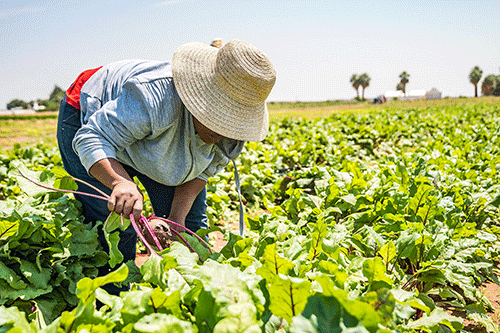For the first time in about 15 years, Namibia has managed to achieve a rate of 45% food self-sufficiency – thanks to local farmers who continue to contribute towards the reduction of staple grain imports, such as maize, pearl millet and wheat.
Sustained output from smallholder and large-scale farmers across the country has been one of the major contributing factors to improved food self-sufficiency, as well as general end-to-end food systems across the various production value chains.
The strategic partnership between the United Nations’ World Food Programme (WFP) and the Namibia Agronomic Board (NAB) has helped to ensure there is a smooth collaboration between farmers, agro-processors and industry marketing agreements that will boost crop production, market access and overall sustainability.
Zambezi regional governor Lawrence Sampofu has also underscored the region’s significant contribution to white maize and pearl millet grains, emphasising the need for farmers to utilise fertile land and favourable rainfall.
He said the Zambezi region accounts for 7% of white maize and 25% of pearl millet of the country’s grain production.
Meanwhile, NAB continues to ensure all required regulations of agronomic and horticultural products movement are in place, and that the facilitation of import restrictions are enforced to protect local producers from competition and promote food self-sufficiency through market share promotion, special controlled products and grain marketing schemes. “The objective is to expand operations, increase crop production and propel Namibia towards food self-sufficiency while diminishing dependence on imports. We reaffirm our commitment to implementing a robust import substitution programme by creating a conducive environment and a thriving market for local farmers,” said NAB’s CEO Fidelis Mwazi.
On his part, WFP’s representative and country director George Fedha said they have placed special emphasis on promoting end-to-end food systems in Namibia, providing climate-smart technology, drought-resistant seeds, infrastructure investment, clean energy, market access and agricultural training.
“Over the years, WFP has been complementing Namibia’s priorities in scaling up domestic food production, and facilitating partnerships and investments that enable the country to capture greater value from the food system as well as strengthening systems and structures that demonstrate efficiency and effectiveness to deliver on this mandate,” shared Fedha.
The impact of the current global and national food-price crisis on food security is heightened by various factors, including low production of food, limited access to modern farming technologies and practices, poor soil fertility, overgrazing and prolonged dry spells.
In Namibia, approximately 54% of smallholder farmers are women who live in communal areas, where access to land and water is challenging.
It is against this background that WFP provides training to government counterparts on the use of drones and other high-tech equipment in emergency response and preparedness, drought-monitoring systems for early-action mitigation and long-term investments to build drought-resilient communities.
Almost all Namibian farmers are susceptible to disasters affecting southern African countries, namely floods, droughts and epidemics.
The country is also prone to pest invasions and disease outbreaks in crops and livestock. – ohembapu@nepc.com.na


